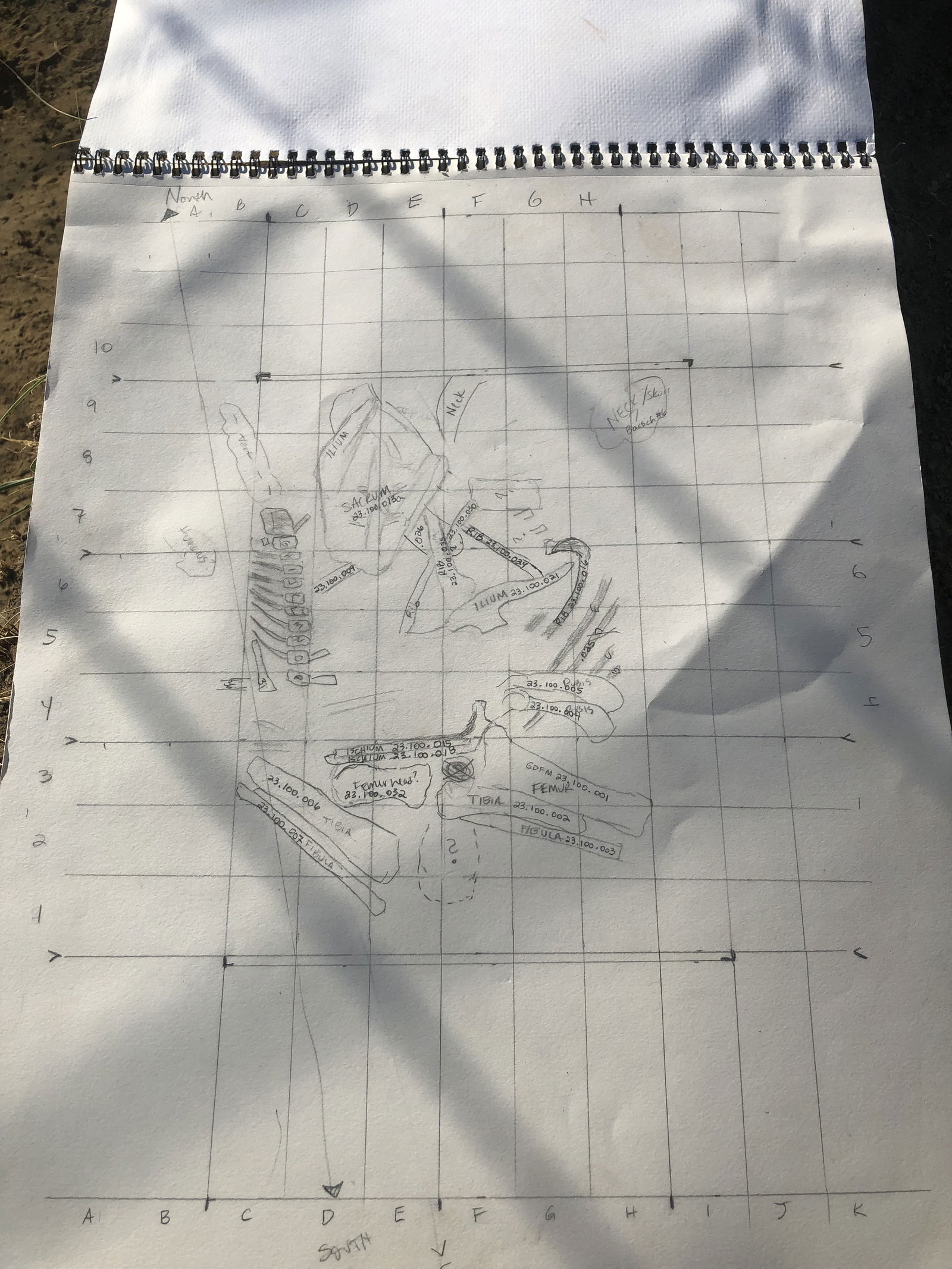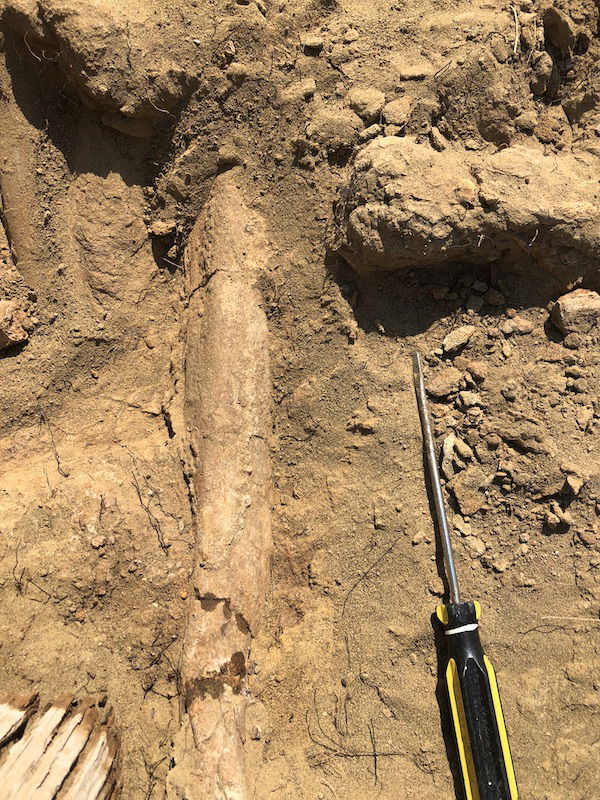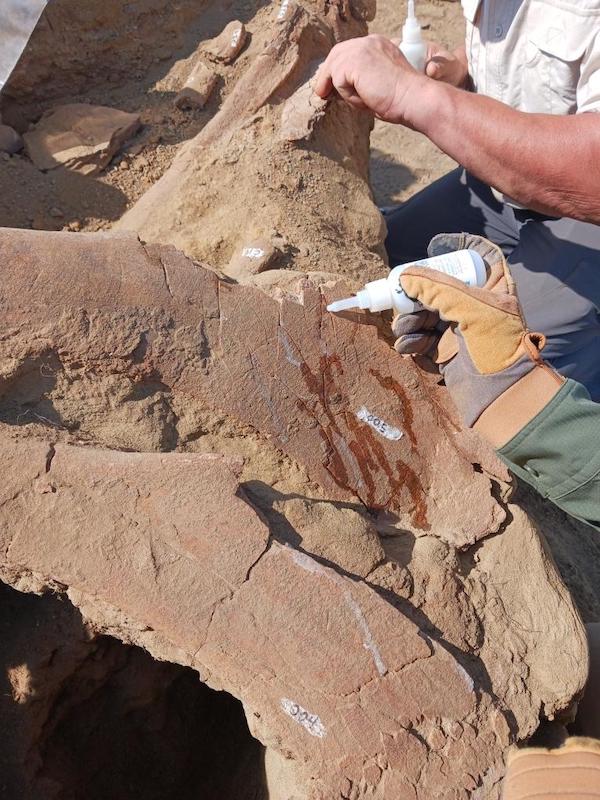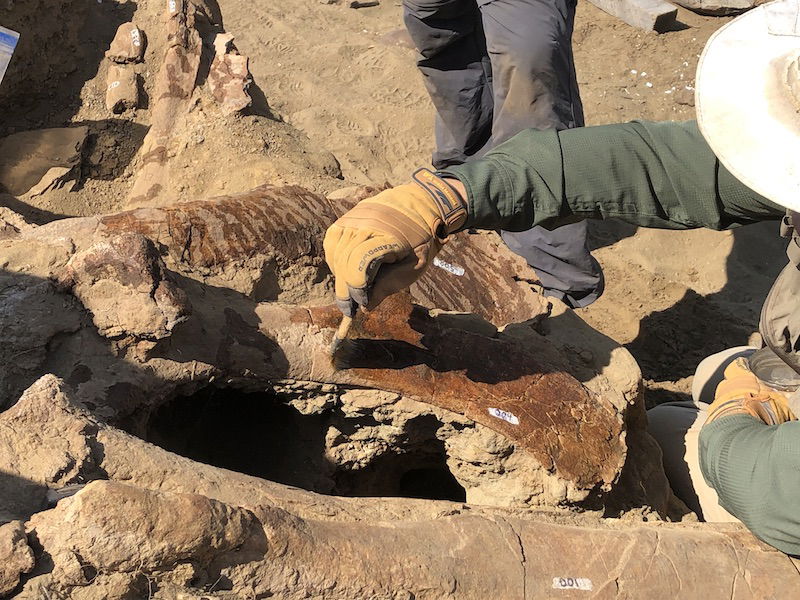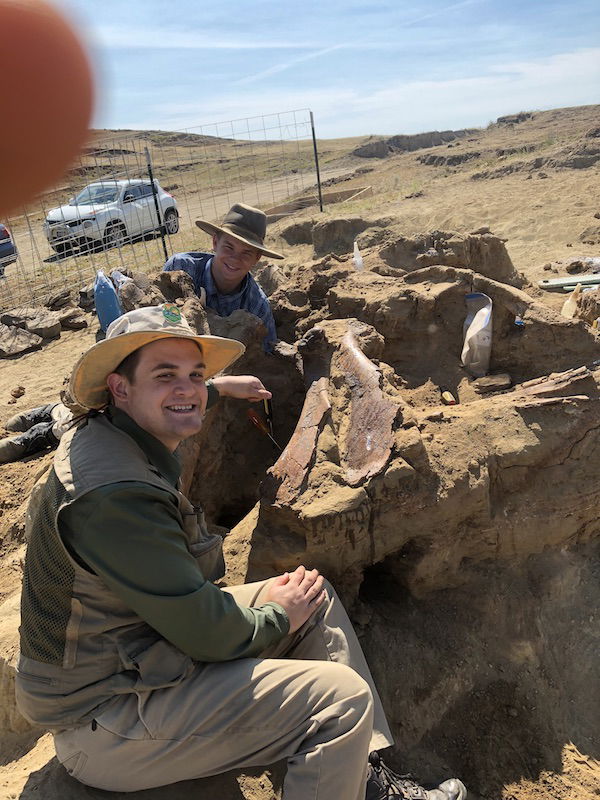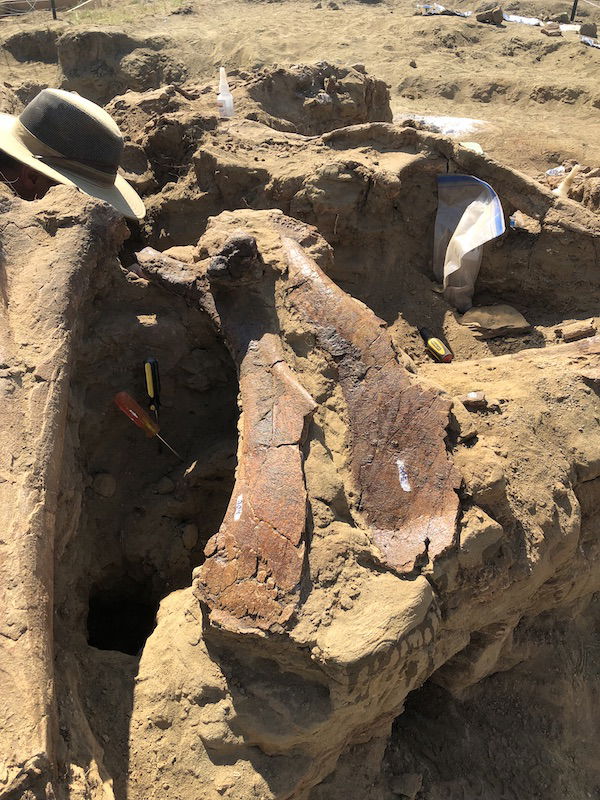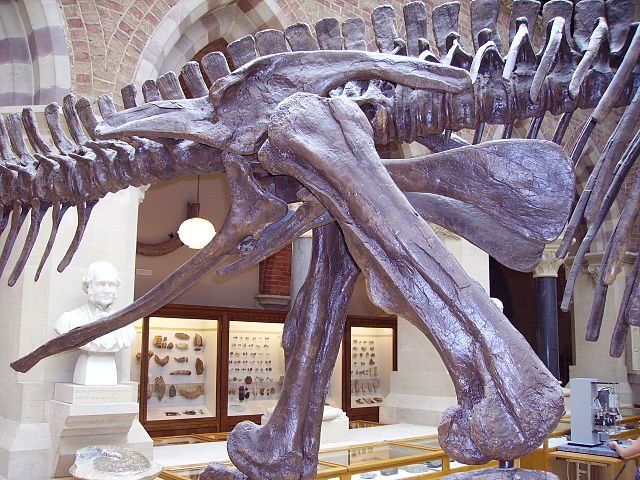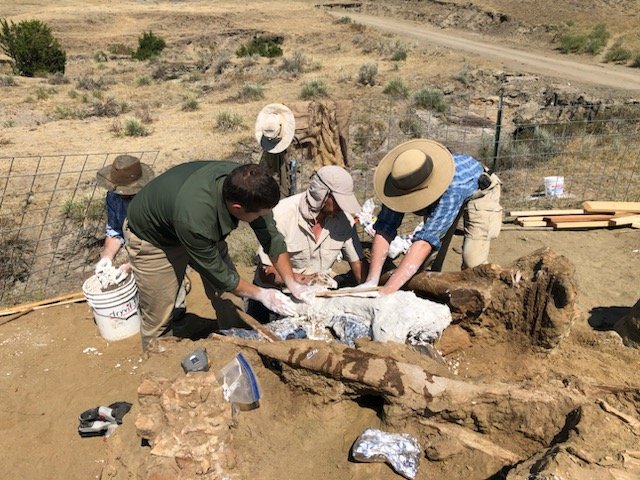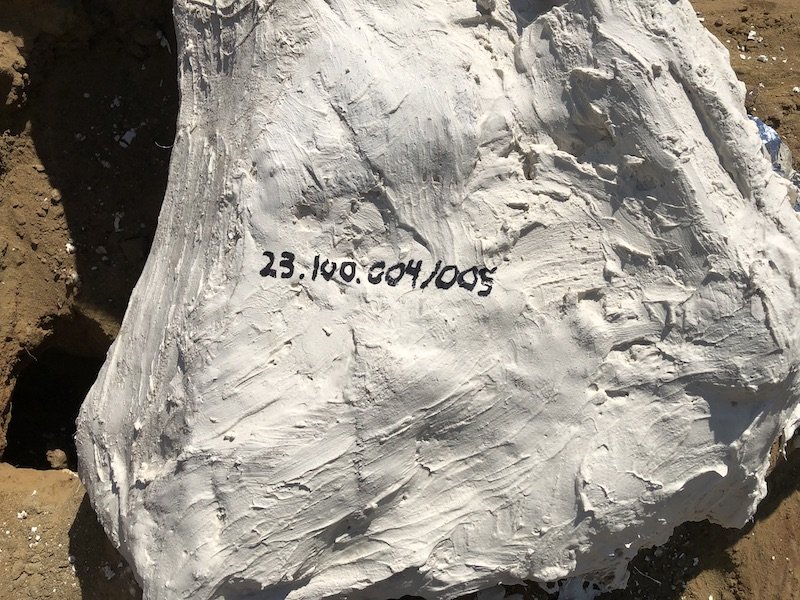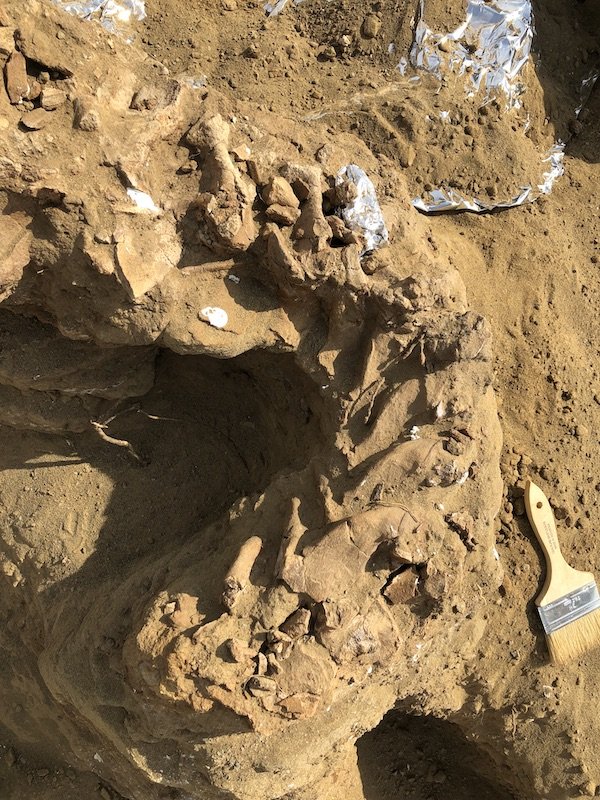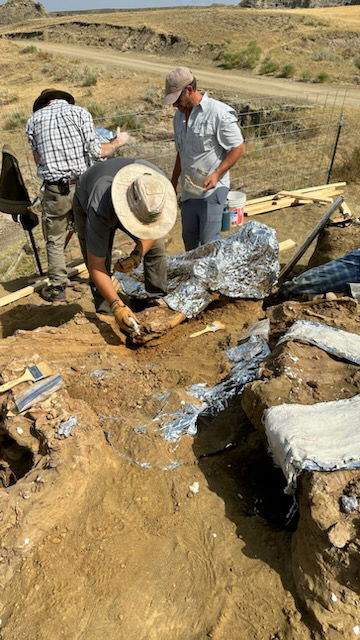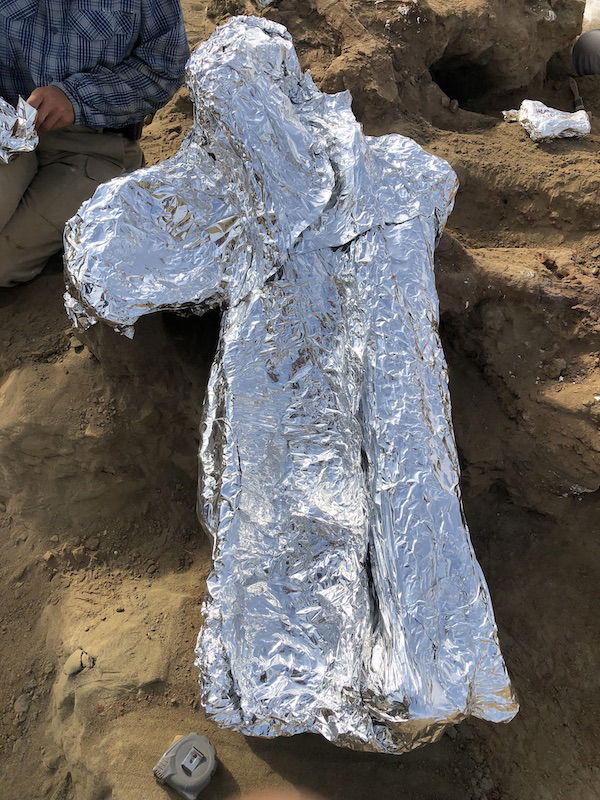Unearthing Ruth
Happy International Dinosaur Month, Dinosaur Explorers! Today, we’re going to continue to learn about Ruth the Edmontosaurus. Specifically, I’m going to talk about the initial few days out on the dig site, exposing and excavating several of her bones. Now, let’s dig in!
As we drove out to the dig site early in the morning on day one, the vast expanse of the east Montana plains spread out before us. It was an exciting day, as for the first time ever I’d be working on a skeleton (rather than just one or two bones) of an animal that died over 4,300 years ago! When we arrived on the site, I was shocked at how relatively small the area containing Ruth’s bones actually was. I later found out that this was due to the nature of the animal’s violent burial in the global flood, which caused it to fold back on itself, just like a piece of paper.
Our first day was mostly spent exposing bones that were already partially visible. These included the lower portion of one of the hind (back) legs, made up of the tibia and fibula, as well as about one-third of the animal’s tail, complete with the caudal (tail) vertebrae and the chevrons. By the end of the 97-degree day, we had plaster jacketed and removed the tibia and fibula I referred to earlier, as well as the sacrum. The sacrum is the portion of the backbone that connects the front half of the animal to the hips and the tail, and it is made up of several vertebrae called, the sacral vertebrae.
Day two of the excavation is a bit of a mystery to me. You see, it’s very important to stay hydrated when out in the Badlands, something I (in my excitement) forgot to do on day one. I became dehydrated and ended up needing to sit out day two. Lesson learned . . . DRINK WATER.
However, I was back in full swing on day three! This was the best day in my opinion. Fellow excavators, Aaron, Jason, Joshua, and I spent several hours painstakingly excavating around the pubic bones (part of the pelvis of the dinosaur). This was made more difficult because the pubic bones were on top of one of Ruth’s femurs, the big leg bone found right under your hips. You see, the matrix (remember that’s what we call the sediment that fossils are buried in) was tightly packed in between the two pubic bones and the femur underneath. So, when we tried to pull the pubic bones up and out, the matrix underneath them wanted to come out with it and, therefore, bring the femur that was underneath with it as well. After several hours of careful excavation and applying lots of PVA (a special protective coating) and field prep (one of several special glues used on fossils) to keep the individual bones safe and in one piece, we finally were able to put on a plaster jacket and pull the pubic bones out. While we were working on the pubic bones, other excavators on our team Tommy and Martha continued to dig into the mound and see what other bones of Ruth’s were present. They managed to excavate, jacket, and remove one of Ruth’s scapulas (shoulder blade) and an ilium (another hip bone).
Our fourth and final day out at the dig site (for this week) was cut short by an intense rainstorm that slowly encroached on us as the day went on. We continued to work as it drizzled, but once the rain began pouring and lightning grew close, we had to quickly cover the dig site and pack up. In that time, we managed to get the portion of Ruth’s tail jacketed, most of her neck, and one of two layers of a jacket on a cluster of leg bones that included both femurs, one tibia, and one fibula. Unfortunately, with the rain, these jackets had to remain in the field for a little longer . . .
That’s all for now. Next time, we’ll take a brief look at some of our time in the lab working on preparing Ruth’s bones for research and display because as Proverbs 18:15 says, “An intelligent heart acquires knowledge, and the ear of the wise seeks knowledge.”
Come back next time to hear more about my ADVENTURES IN THE WORLD OF DINOSAURS!
- © 2024 Answers in Genesis
- Privacy Policy
- Contact
- About


